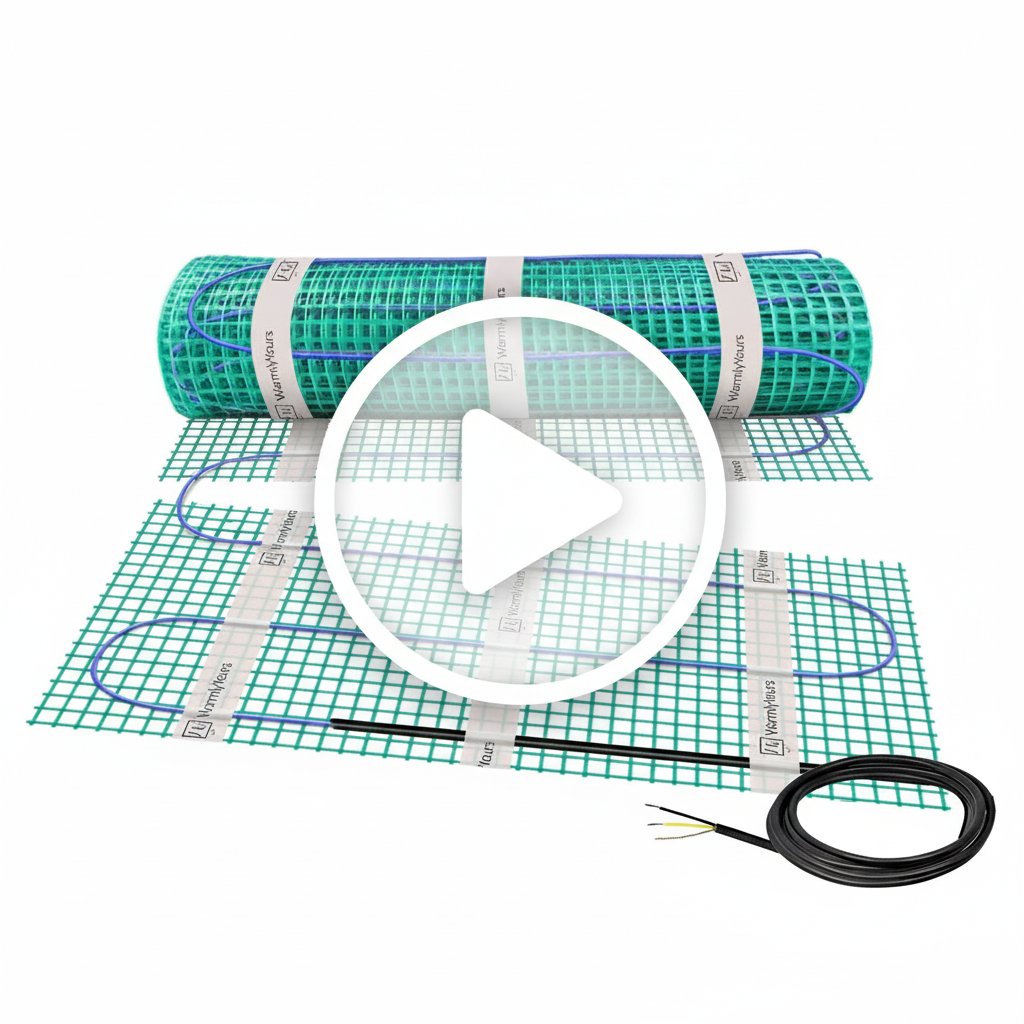DIY Radiant Floor Heating and Tile Flooring Guide
published on december 17, 2019

In This Article
Ready to take on a rewarding DIY project? Installing radiant floor heating beneath your tile floors is easier than you might think—and the cozy warmth you’ll enjoy every day is worth it.
The TempZone Floor Heating Mat is designed with DIYers in mind: flexible, easy to lay out, and perfect for smaller spaces like bathrooms and kitchens. When combined with a custom SmartPlan layout and the handy Circuit Check tester, you’ll have the guidance and tools to install with confidence.
In this guide, we’ll walk you through everything you need to know—from planning and tools to step-by-step installation—so you can enjoy a warm tile floor you installed yourself.
Quick Facts: DIY Heated Tile Floors
- Best DIY product: TempZone Floor Heating Mat for tile floors.
- Ideal rooms: Bathrooms, kitchens, entryways, and other smaller spaces.
- Skill level: Confident DIYer for layout and tiling; licensed electrician for final hookup.
- Planning support: Complimentary SmartPlan layout based on your room measurements.
- Safety checks: Digital ohmmeter tests (within 15% of label) plus Circuit Check monitor.
- Typical operating cost: Around $0.01–$0.15 per hour, depending on local rates.
Why Tile Works Best for Radiant Heat
Tile has been a natural partner for radiant heat since ancient times, and the same principles make it ideal for modern homes.
- Tile absorbs heat quickly and releases it evenly, providing consistent, comfortable warmth.
- Radiant systems warm the floor first, so heat rises gently, allowing you to lower thermostat settings.
- Paired with a programmable thermostat, radiant floor heating reduces wasted energy and lowers bills.
- Tile acts as a thermal mass, smoothing temperature swings and enhancing year-round comfort.
Is DIY Radiant Floor Heating Right for You?
Installing radiant floor heating under tile can be a great DIY project. Use this quick guide to decide whether to take it on yourself or bring in a PRO.
DIY is a good fit if:
- You’re comfortable measuring, cutting tile, and following detailed instructions.
- You have basic tools and are willing to take your time with layout and prep.
- You like projects where you can follow a clear plan, such as a SmartPlan layout.
Consider a PRO if:
- The room is large, has complex shapes, or includes multiple zones.
- You’re not comfortable troubleshooting issues during installation.
- You prefer to have a contractor handle most of the work and coordination.
Note: A licensed electrician should always complete the final electrical hookup.
Common DIY Mistakes to Avoid
- Cutting the heating cable: Only cut the fiberglass mesh, never the cable itself.
- Skipping resistance tests: Use a digital ohmmeter before, during, and after installation.
- Installing under fixtures: Avoid heating cables under cabinets, tubs, or heavy permanent fixtures.
- Allowing cables to touch: Maintain proper spacing and never overlap heating cables.
- Improper sensor placement: Position the sensor between heating cables, never touching them.
Watch the Installation in Action
Prefer to see the process before you start? This short video walks through the core steps you’ll use with TempZone Mats.

FAQs: DIY Heated Tile Floors
How do I know what size heating mat I need for my room?
Measure the floor area you want to heat, excluding permanent fixtures. Submit your measurements to WarmlyYours for a custom SmartPlan layout.
Can I install radiant floor heating myself if I’m not an electrician?
Yes. You can install the mat and prepare the floor yourself, but a certified electrician is recommended for the final wiring and power connection.
Can I cut or trim the heating mat to fit my space?
No, never cut the heating cable. You may only cut the fiberglass mesh backing to adjust the layout.
Ready to Transform Your Floors?
Our expert support team is here for you every step of the way. Whether you have questions about your SmartPlan layout or need advice on troubleshooting, don’t hesitate to reach out.
Have Questions About Your Project?
Our team of Radiant Experts is ready to help!
Stay Updated
Get the latest radiant heating news and tips delivered to your inbox.


